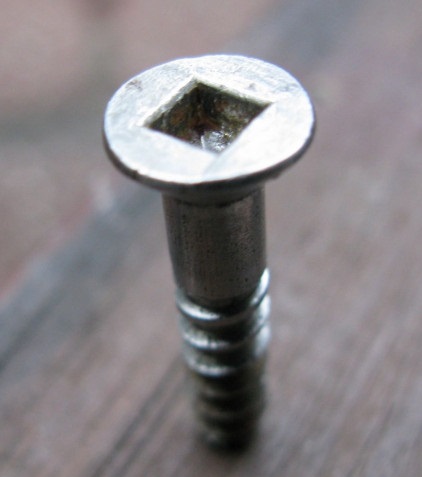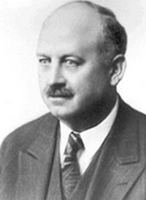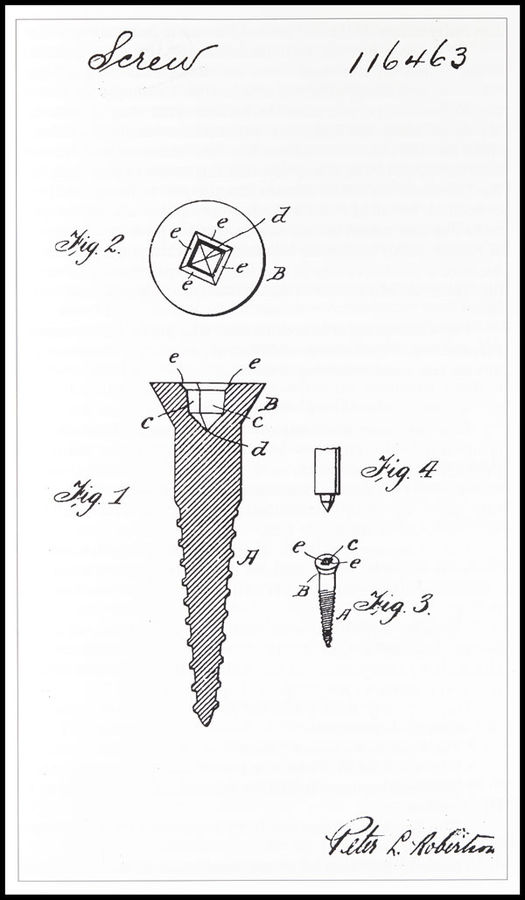You know how you tend to take everyday things for granted and don’t really think about how they came to be? Well, someone had to invent them right?! One example of this is the Robertson screw, which is the one with the square hole.

Robertson screw
This screw is actually a Canadian invention!
Back in the late 1800s and early 1900s, the only screw available was the slot head screw. However, these screws are hard to use without hurting yourself when the screwdriver slips and hits your hand or gouges whatever you’re working on.
In 1879, Peter Lymburner Robertson was born in Ontario, Canada. He was a born inventor who had invented all kinds of things by his mid 20s, including a self-centering corkscrew, a better mouse trap, and the original multi-tool. While demonstrating a spring-loaded screwdriver, he cut himself badly when the slot head screwdriver slipped. That gave him the idea of a new kind of screw that wouldn’t slip.

P.L. Robertson
What made his new screw special?
He wasn’t the first person to come up with the square design, but he WAS the first person to taper the square shape. The driver fits snugly and is easy to align, and doesn’t slip out.
Most importantly, you could cold-form the screws, which means it didn’t have to be heated first during manufacturing. They could be made cheaply and quickly. It was so successful that he patented his design in 1907.

Robertson screw patent illustration
He quickly found a use for his new screw design in the Canadian furniture industry. Furniture was much less likely to get damaged by slipping screwdrivers. So he set up his first factory in Milton, Ontario, in 1909. One of his first large customers was the Fisher Body company and they started using it for the Canadian version of the Ford Model T car.
Why didn’t the Robertson screw make the jump onto the world stage?
After a few years of great success in Canada, Robertson took his screw to England and he started a recessed screw company with the goal was to supply Russia and Germany. Unfortunately, the advent of World War I but an end to this venture.
After the war, his company was doing really well in Canada and he wanted to expand into the United States. Henry Ford wanted to use his screw because he learned it was saving $2.60 per car in Canada, which was significant savings on a car that retailed for $360! The deal he proposed was that he would use the screws in all his plants in the USA, but it was exclusive, so no one else could use them. Robertson refused so the contract failed in both Canada and the USA. This was about a third of his business. After 3 failed attempts to license his product outside of Canada, he finally gave up.
Why did the Phillips screw arrive on the scene and achieve success?
In 1934, Henry Phillips had patented a new design and was trying to license it in America. In 1936 he managed to have the engineers from General Motors test it and it was enough of a success for them to use it in their cars. The first car was a 1936 Cadillac and it quickly became clear that it was much safer to use and quicker to build. In a few short years all the cars were using the Phillips screw, including Henry Ford. The airplane and railway industries soon followed suite. By 1940, 80% of manufacturers were using his licensed design.

Phillips Screw
When World War II broke out, hundreds of thousands of military vehicles and aircraft were put together using the Phillips screw. By the time the patents expired in the 1960s there were more than 160 domestic licenses and over 80 foreign licenses. Canada had the Robertson screw, but the rest of the world had the Phillips screw.
To listen to the full episode and read the show notes, visit www.AllThingsRenovation.com or click on the Podcast tab at the top of our homepage at www.woodbeart.com.


